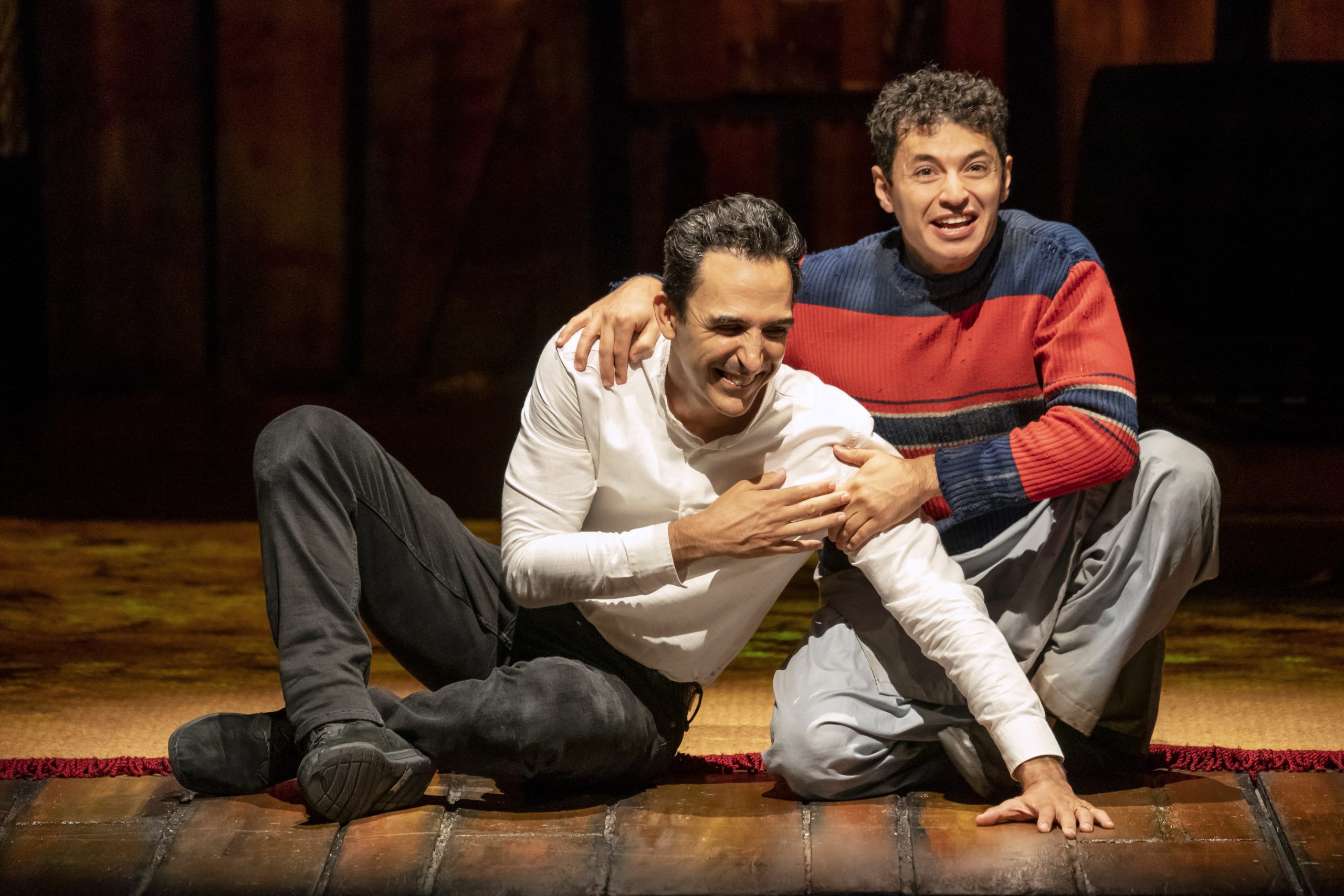
The Kite Runner has transformed from Khaled Hosseini’s bestselling 2003 novel into this new Broadway adaption. The Kite Runner tells the story of a boy named Amir, ranging from his childhood in Afghanistan with his best friend Hassan whom he later betrays, through adulthood as he seeks redemption for his failings. It’s a remarkable story with deeply flawed characters and complex themes. Now this profound play is running at the Hayes Theater on Broadway in a limited run until October 30th.
The narrator of The Kite Runner is Amir, who begins as a child in 1974 growing up in Kabul. He lives with his wealthy father he calls Baba, and plays with his best friend named Hassan, the son of his father’s servant. Hassan is deeply loyal to Amir and will follow him anywhere, but Amir also genuinely cherishes Hassan as a friend. Amir and Baba are Pashtun, the largest and highest caste ethnic group in Afghanistan, while Hassan and his father are Hazara, the lowest and most oppressed caste. Baba treats his servant and Hassan as equals, which makes Amir, desperate for his father’s approval, envious. The boys engage in kite fighting, an Afghan tradition, and when Amir cuts another kite, Hassan runs to retrieve it. At the kite fighting tournament, when Hassan runs a kite for Amir, he encounters their bully Assef, a sadist who believes all Hazaras should be expelled from Kabul. Assef demands that Hassan hands over the kite or he’ll be punished with a brutal assault. Amir witnesses the scene, but instead of sticking up for his best friend (as Hassan has done for him), he cowardly hides while Assef brutally rapes innocent Hassan. Amir’s choice and his subsequent actions seal who he is as a person and the fate of his best friend. Until one day in 2001, with Amir having fled Kabul for San Francisco, he’s offered “a way to be good again.”
There are so many wide-ranging themes this piece explores. The themes of loyalty, betrayal, and redemption are most pressing. Whether Amir can ever atone for his pathetic betrayal of his ever-loyal best friend and if all he does in the final act earns him any redemption. There’s also a powerful father-son dynamic, with Amir trying to earn Baba’s approval and Baba trying to act as a proper father. There’s a theme of classism, with Amir and Baba benefitting from the Pashtun-dominated culture of Kabul while Hassan and his father have scarce options. There’s a strong geopolitical theme, with Afghanistan turning from a beautiful place full of kites and flowers to a joyless nightmare taken over first by the Soviets and then by the Taliban. There’s the theme of refugee struggles, with Amir and Baba fleeing Afghanistan for a less glamorous life in America and the story showing how difficult it is for anyone to escape Afghanistan. The play handles all these themes incredibly well, demonstrating them for you to ponder while not being heavy-handed in delivery.
Two actors do most of the heavy lifting in this play, and they both did a phenomenal job. Amir Arison plays Amir, both as a child and as a grown man. It’s a remarkably demanding role, with Arison not leaving the stage once in the duration. Arison does an excellent job leading the audience as our narrator as well as portraying Amir’s shameful acts. Despite the horrible cowardice shown by the character, Arison plays him with empathy to prevent the protagonist from becoming irredeemable to us. The other breakout is Eric Sirakian playing Hassan and Sohrab. Sirakian, a grown man himself, plays a child for the entire play. But he brilliantly conveys the youthful exuberance and optimism beaming from Hassan. For The Kite Runner to work, you need to feel a strong connection to the character of Hassan, and Sirakian endears himself to the audience immediately. I was skeptical that two adults playing children would work, but Arison and Sirakian had the sincere chemistry as friends and versatility as actors to remove all doubt.
The one main weakness in this production is the lack of Afghan atmosphere on the stage. The staging is extremely simple, without much of any backdrops, set pieces, or props. Unlike the book in which the sights and smells are vividly described or the movie in which they’re shown, we don’t get much of a feeling that we’re experiencing Kabul. The eponymous kites, representative of the freedom and beauty of Afghanistan before invasions, are demonstrated with small, white, gift wrap tissues. Though we lack the sights of smells of Kabul, we are treated to the sounds. Salar Nader is the Tabla Artist and plays the traditional percussion instrument on stage for much of the performance. His superb music significantly adds to the atmosphere, though our other senses were underwhelmed. I also took issue with the characterization of young Assef (Amir Malaklou) as the bully. Assef is supposed to be a half-German, half-Pashtun supremacist. The character in the book idolizes Hitler and believes no Hazaras have the right to live along him. In this interpretation, Assef felt too much like a playful bully throwing around slurs, but without much impassioned disgust deeply rooted in him. To best portray Assef, he can’t be anything close to a typical neighborhood bully, but instead a malicious extremist.
Still, The Kite Runner is a beautiful and challenging story that should be seen by the masses. With these actors telling this heart-wrenching tale in an intimate setting as only live theater can do, it’s well-worth it to see this production while you can. The emotions this play taps into will be make you feel deeply, and that’s the gift of The Kite Runner.